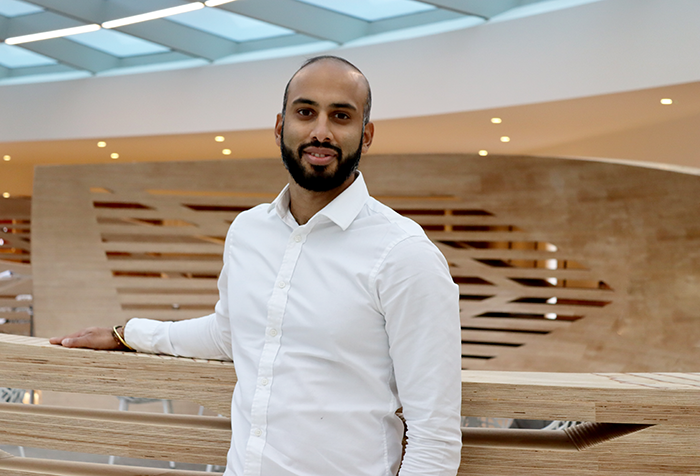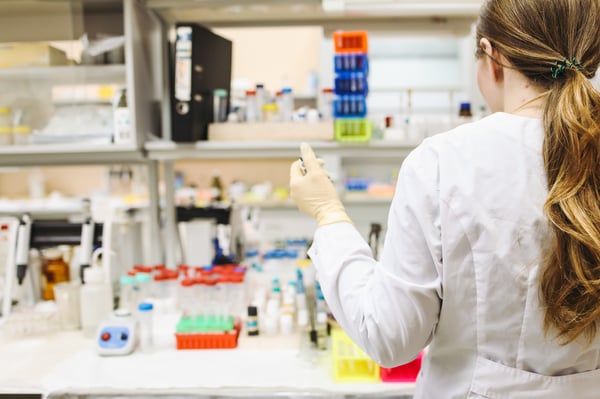Building software for scientists: Q&A with Anup Hirani
Anup is Vice President of Product Management at Eagle Genomics. In this article he talks to us about the partnership between user experience and functionality and what it takes to build a software platform for scientists.
 Anup Hirani, Vice President of Product Management
Anup Hirani, Vice President of Product Management
Q: What is your role at Eagle Genomics?
My role is the Vice President of Product Management which means I am responsible for the product management team here at Eagle Genomics. The role includes responsibility around designing and building the e[datascientist] platform, product ownership and team management as well as user experience and product marketing.
In terms of my day-to-day work I contribute to a combination of both strategic and operational activities. I always have to be asking myself questions: What does the product roadmap look like? How can we evolve that roadmap into tackling the business challenges we want to pursue? How can we create value by adding new opportunities into the roadmap?
Lots of the conversations I am involved in include talking to the commercial teams about different sales cases, identifying how the product can help specific customers and deciding how any new features should be integrated into the engineering process.
From a more operational level, product management is essentially responsible for product delivery. My team has to ensure that we work closely with the engineering team to achieve the milestones included in the roadmap and reach the goals we are aiming for within each quarterly commitment.
Q: What is your favourite part of the job?
The most rewarding thing about being in product management is being able to help build products that can create value and change the way businesses use software, as well as have a positive impact on the end users and customers. For me, that’s the most inspiring part of the job.
I have an engineering and management background, so by my nature I like to see things being shaped and built. I really enjoy seeing projects progress over time, not just over a few weeks or months, but quarter by quarter over multiple years. Whenever I’ve been involved in building a product it has been to see how it evolves in the long-term and how it can enable growth. So that’s the goal I constantly have in mind, I’m always asking myself, ‘How can I help build a product that is going to be genuinely useful to our customers and how can I help the business grow over time?’.
Here at Eagle Genomics we are building software technology within the life sciences which means we are trying to disrupt how things are currently being done in the field. I think that’s very exciting, not just from a technological perspective but for the domain of life science itself.
Q: Life sciences and software solutions are both such specialist fields, what is the role of product management in successfully bringing them together?
One of the things we need to remember is that the process of adopting technology is not always fundamentally different across different areas of expertise. We are building for the life sciences but, whenever software is being built, there are a lot of commonalities across industries. The most important thing is to make sure you are building in those fundamental capabilities, even more so when you are building a platform, because a lot of those features are going to be similar across software platform solutions. As someone who is responsible for product strategy and delivery it is very important that myself and my team consider the commonalities of these capabilities, such as how we manage data, security and user engagement.
![e[datascientist]](https://www.eaglegenomics.com/hs-fs/hubfs/Imported_Blog_Media/e%5Bdatascientist%5D-2.png?width=600&name=e%5Bdatascientist%5D-2.png) The journey from data to insight with the e[datascientist].
The journey from data to insight with the e[datascientist].
In terms of the life sciences I would say the most interesting and challenging elements are the platform use cases and the type of users we are approaching. Scientists are probably one of the most complex personas to be building and designing for because they are highly skilled and trained, have very specific ways of operating and they are used to spending a lot of their time working in an offline environment. This means that bringing everything online in a highly collaborative environment will bring a lot of different challenges with it. It’s essential to have an in depth understanding of the personas you are building for, and what drives them, in order to build capabilities that don’t just solve their problems but actively demonstrate that this system is better than continuing to use existing protocols and processes.
One of the key roles of product management is to prioritise. In many ways it’s about understanding priorities from different stakeholder's perspectives, both internally and from a customer point of view, and why those particular elements are important to those individuals. I think that’s actually the most challenging (but also the most interesting) part of being a product manager!
Q: For you, what is the most important factor in building a new software product?
I think, first of all, it’s important to have a well defined vision; a vision being an inspiring idea and something quite grand in scale. A vision is important because it not only drives things such as how you build your roadmap or how you structure your team, but it also impacts company culture and how you can engage people within the organisation. A product manager needs to be able to motivate and lead in both good times and hard times and the company vision is going to be key to enabling that.
Focus is another thing I would really highlight. When you are building a new software, focus is important because you need to be able to see a clear path towards achieving the vision. That comes with a lot of opportunities, but also potential challenges. There will always be a limited set of resources available so it’s vital to have a process in place for deciding where and how you are making your trade offs and how to select what gets prioritised. It’s really important to build from the bottom-up and move towards the vision, rather than trying to solve everything at once in a very short space of time. If you are trying to do too many things at once you can end up ‘blocking the pipeline’ and under-delivering. It’s better to set a scope within a bigger vision and enable a tight focus in order to build towards the vision in the long-term.
Q: What are the specific challenges of building a software solution for the life sciences field?
I think there’s a combination of factors. We are facing similar challenges to other platform companies when it comes to deciding how to architect a platform and how we are going to scale as the company and customer base continues to grow.
Essentially we have to make sure that we are always building our platform in a way that is directly addressing the problems our users face in their day-to-day work and never getting distracted from that. When building the e[datascientist] we always need to be considering how a scientist (a platform user) wants to flow from data to insight and how we can create maximum usefulness and value for them.
 The needs of the user must be at the heart of software solutions.
The needs of the user must be at the heart of software solutions.
It’s also important to design for experience as well as functionality. Even if the functionality you build is fantastic, if it isn't partnered with a good user experience and interface then you are likely to confuse and lose your users. It’s essential to have an attractive experience for your particular persona, in this case researchers within the life sciences, on top of complex functionality.
Q: What role do you think software solutions will play in the future of life sciences research and development?
Traditionally when working within a platform business you look at how your company’s technology leads to business impact. Within Eagle Genomics I would say our platform is not merely about the impact the technology has on businesses but the impact it has on people and the environment.
I think the future of software within life sciences, applying modern technology such as artificial intelligence to manage the vast volumes of data produced by the field, will ultimately help to create healthier environments, more nutritious food and better health for people. I think that’s where the future will lead now that it is possible to merge technology with complex health and environmental challenges. Technology needs to be adapted as well as adopted in order to achieve these goals and I think that’s where the most exciting work and the real challenge lies. The e[datascientist] presents the opportunity to solve some of these challenges at scale and that element of scalability is what will enable this technology to impact individual lives in a meaningful way.
Q: How did the concept for Eagle Genomics’ e[datascientist] software platform come into being?
When I joined Eagle Genomics I was very involved in defining the parameters of the platform and what we wanted to enable users to do. There was already a clear concept for what we wanted to achieve from a scientific perspective but I have helped develop a focus on user experiences such as, knowledge discovery, user collaboration and enabling the sharing of data and resources between users. I believe these elements, which sit on top of the complex ‘behind the scenes’ functionalities which enable life sciences data management, are fundamental to a productive user experience and therefore the use-value of the e[datascientist].
Q: Where do you do your best thinking?
I do my best thinking in discussions with other people. Conversations with others where I can discuss product, technology and experience related questions are my favourite place for creative thinking. I really enjoy having broader conversations in order to try and solve the big challenges! At Eagle Genomics that happens everyday, which means I really enjoy my work.
![Learn more about e[datascientist]](https://no-cache.hubspot.com/cta/default/2869527/95a273e6-3721-4619-96f8-c62aaf8fade1.png)